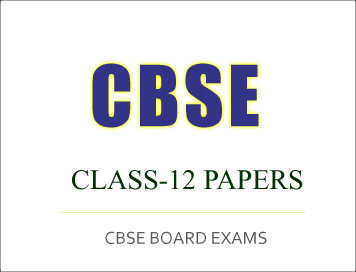CBSE Class-12 Question Papers for IOP/Comptt Examination 2017 : All India Scheme, Geospatial Technology
Disclaimer: This website is NOT associated with CBSE, for official website of CBSE visit - www.cbse.gov.in

CBSE Class-12 Question Papers for IOP/Comptt Examination 2017 :
All India Scheme, Geospatial Technology
GEOSPATIAL TECHNOLOGY – II
Time allowed : 3 hours
Maximum Marks : 60
SECTION – A
(Multiple Choice Questions, attempt any 12 questions out of 15, each question of one mark )
1. Thermal band of EMR is between :
(a) 0.1 – 4 um (b) 0.4 – 0.7 um
(c) 0.9 – 1.um (d) 3 – 5 um
2. Water does not reflects in :
(a) Visible band (b) Infrared band
(c) Red band (d) Blue band
3. Resolution of WIFS sensor is
(a) 5.6 m (b) 1 m
(c) 188 m (d) 23 m
4. Data input is an operation of encoding data into :
(a) Image (b) DEM
(c) Data box (d) Aerial photo
5.Aspatial and spatial data is stored in GIS;
(a) Only spatial (b) Only aspatial
(c) None of them (d) Both of them
6. GIS is a tool which integrates data into a common format obtained from :
(a) non-digital source (b) digital source
(c) only hard copy source (d) digital and non-digital both
7.The instrument used to determine location is called :
(a) Satellite (b) Aircraft
(c) GIS (d) GPS
8.GPS can work in :
(a) tunnel (b) inside room
(c) clear sky (d) under water
9.The accuracy of DGPS varies between :
(a) 15 – 100 m (b) 20 cm – 1 m
(c) 0.5 m – 5 m (d) 1 cm – 5 cm
10. A body which reflects all radiation is called :
(a) White (b) Black
(c) Coloured (d) Grey
11.GIS that is integrated through an entire organization is called :
(a) Web GIS (b) Mobile GIS
(c) Enterprise GIS (d) 2-D GIS
12.3-D objects have an extra dimension of :
(a) Length (b) Width
(c) Depth (d) Length and width
13.Flood warning is issued by IMD, using inputs from :
(a) IRS (b) Insat
(c) Gagan (d) RISAT
14.Dengue and Chickengunia prone areas can be mapped using :
(a) RISAT (b) Insat
(c) Gagan (d) Toposheet
15.INSAT Satellite rotates around the earth in direction :
(a) North – South (b) South – North
(c) Geostationary orbit (d) Elliptical orbit